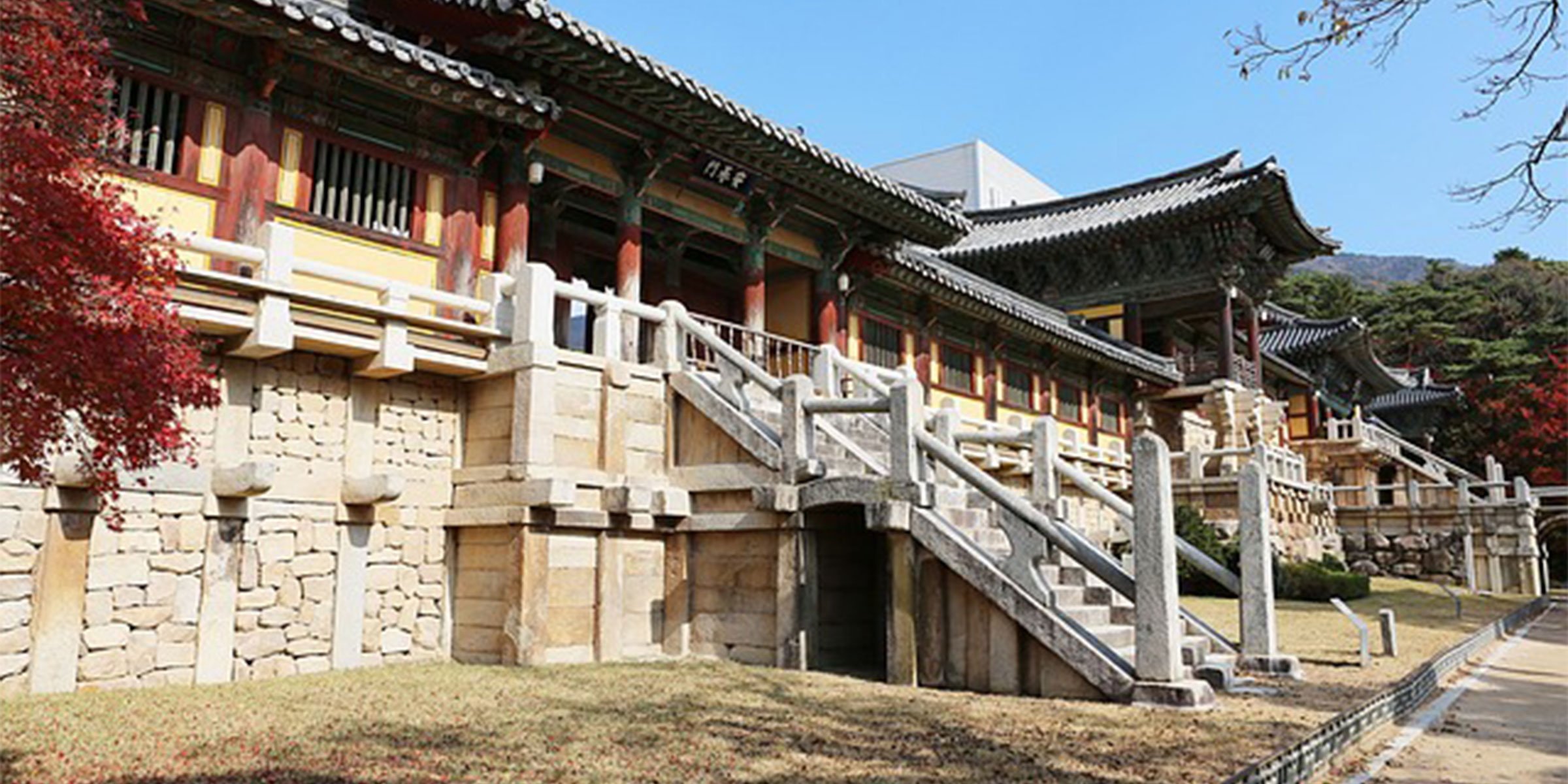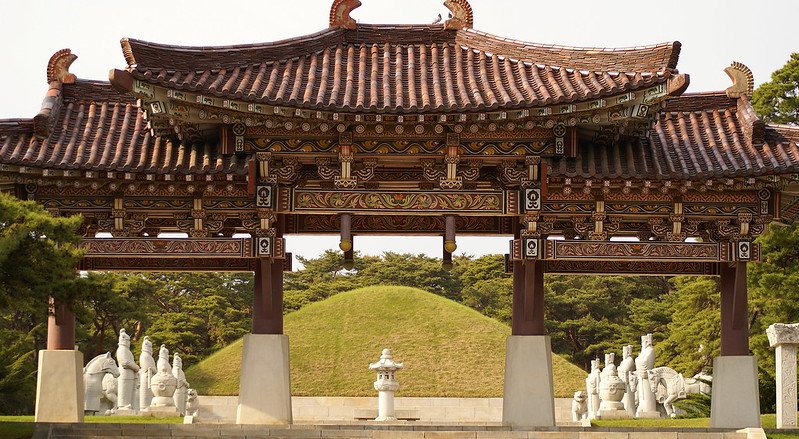Samguk Sidae: Three Kingdoms of Korea
Do you think Korea’s founder, Dangun (단군왕검), is a legend or myth? We previously discussed the birth of Korea, when its citizens first appeared, and their culture began. However, after the fall of Korea’s first kingdom Gojoseon (고조선), three more kingdoms were established that were even more powerful than the last. After the demise of the Han military, due to its terrible leadership skills, Korea’s newest kingdoms had yet to battle the Tang dynasty while battling each other.
From their rise in 57 B.C. to their fall in 668-76 A.D, Goguryeo (고구려), Baekje (백제), and Silla (신라) became some of Korea’s most influential kingdoms. Astrology and agriculture from this ancient time have become essential in Korean culture today whereas architecture from these kingdoms greatly inspired Korea’s later dynasties and made survival from future wars possible— but that’s a story for another time.
Here is the story of Samguk Sidae (삼국 시대): Three Kingdoms of Korea.
Goguryeo
Credit: Flickr
A Buyeo (부여) prince named Jumong (주몽) founded Goguryeo, meaning big village, in 37 B.C. If you thought slang didn’t exist back then, read some history textbooks! The king was dubbed Dongmyeong (동명성왕, the Bright Holy King of the East) to most but known as Chumo (추모, excellent archer) in his home nation. Although Goguryeo flourished as its own kingdom, China and other Asian kingdoms close by became an inspiration for its inventions, culture, and leadership. This new diverse, practical way of living influenced Baekje, Silla, Gaya (가야), and even Japan. Eventually, the culture grew so strong that it was passed down centuries later to Unified Silla (통일신라) and Balhae (발해).
Goguryeo spanned across what is North Korea and parts of South Korea today, from the Amnokkang (압록, the river border between China and North Korea), and above the Hankang (한강, Han River along northern South Korea). The kingdom was known for its golden crowns and ceramics with beautiful inscriptions, but its tombs are considered the greatest cultural invention. They are not just popular tourist destinations, but the fundamentals of custom, design, and the memory of Korea’s monarchy. There are 14 imperial tombs and 26 noble tombs built on mountains with impeccable artwork to show that humans and nature could live in peace and that creativity and intelligence followed them. Most of the tombs were excavated to reveal priceless jewels and daily commodities, now displayed in museums across China and the two Koreas.
Baekje
Credit: Flickr
Baekje, meaning multiple counties, was founded in 18 B.C. by Onjo (온조왕). The young king was the son of Gogurgyeo’s founders, Jumong and Soseono (연소서노). The kingdom spans across southern North Korea, such as Pyongyang (평양시), and west-central South Korea, such as Seoul (서울) and Gwangju (광주광역시). However, there was already a small region named Baekje during Samhan (삼한) in the Mahan Confederacy (마한). The actual kingdom had a different name originally, Sipje (십제). As the kingdom grew after occupying other smaller kingdoms, the name was recycled and changed to Baekje during the reign of Geunchogo (근초고왕) in 346, the thirteenth king.
Baekje also had incredibly designed pottery that influenced Japan, but one of the most excellent skills the kingdom had was distinguished maritime power. Through its navigation skills, Buddhism spread to multiple surrounding kingdoms, becoming the official religion of the three kingdoms and other parts of East Asia. Before this, there was no specific religion or political stance recorded in Korean culture. In fact, Baekje was composed of many people from different kingdoms and nations, such as native Han (한) and Korean Yemaek (예맥) from Goguryeo and Buyeo, and small groups from the Lelang Commandery (낙랑군) and Jin (진국).
However, the establishment of Baekje would have never come to be if it wasn’t for Onjo’s mother leaving Goguryeo with her two other sons after her husband Jumong crowned his first son Yuri (유리왕) as the next king. Taking ten vessels and following their advice, Onjo settled in Wiryeseong (위례성, now Seoul), the two early capitals of Baekje, but the third son Biryu (비류) settled in Michuhol (미추홀, now Incheon (인천)), not taking their advice. While Onjo thrived, Biryu failed and declared war (and lost) after being rejected to take the throne of Baekje. Unable to recover from his loss, the third son committed suicide, leaving his people to fend for themselves as they fled to the capital cities of Baekje.
Silla
Credit: Yoohyuk Kim (김유혁)
There is much to say about the small Silla kingdom that significantly contributed, even defined, Korean culture. Though originally the smallest of the three kingdoms, Silla was the most prosperous and grew to outrank both Goguryeo and Baekje during the unification of multiple kingdoms. Silla was known to annex its surrounding kingdoms, and while it led to much war and bloodshed, it also built bonds and gained allies with other nations. Silla was also known for its gold, making other kingdoms jealous of its craftsmanship. Perhaps the best-structured kingdom, Silla relished itself in Buddhism, wanting everyone to feel peace and prosperity. Now a top-ten tourist destination, the Bulguksa Temple (불국사) signifies peace but was an unfortunate victim of much change and tragedy throughout its early life. However, it still stands today after being rebuilt in the 1920s after a fire during the Imjin War (임진왜란) from 1592 to 1598. It now holds several national treasures, and was classified as a World Cultural Heritage site by UNESCO in December 1995.
Before Silla became a kingdom, it was a state called Saro (사로국) in the Jinhan Confederacy (진한). The king (yes, not queen) was called Lady Saso (사소부인), or the Sacred Mother, but her history is often confused between myth and legend. One story says she was the daughter of an emperor and was pregnant without a husband, so she fled to the East from China. However, another account says that she was brought up in a wealthy royal family in Buyeo and moved to the East to create her own kingdom. She later gave birth to two children, Aryeong (알영부인) and Hyeokgeose (박혁거세왕), who later married. However, here’s where things get tricky. If Lady Saso had given birth to this couple, why did she not raise them? Well, it was said that she had powers, which the kingdom first saw when the children were born, and they were left to be raised separately until they came to be powerful together. In fact, the surname Park (박) was first recorded during their reign.
Lady Aryeong was born in 53 B.C. on the left side of a dragon’s ribs near a well, but other sources say it was the right side. An older woman found and raised her. Meanwhile, Hyeokgeose’s birth was a lot more magical. Six chiefdoms decided to found a new kingdom, but a bright light shone from the sky and interrupted their meeting. It is said that the sun and moon rose together while volcanoes erupted. A white horse came from the sky, and a baby was discovered hatching from a gourd-shaped egg by Chief Sobeolgong (소벌공) of Goheo (고허). The chief raised the baby in a state named Seorabeol (서라벌), now known as Gyeongju (경주), and made the teenager king at the age of 13. Born in 69 B.C. as Bulgeunae (불그내, bright world), that young king was Hyeokgeose of Silla. The Saro state was renamed Silla, occupying its surrounding regions, whereas the Seorabeol state was renamed Gyeongju and became the capital of Silla, still surviving to this day in North Gyeongsang (경상북도). His tomb, alongside many other monarchs and nobles, is also a popular tourist destination.
Gaya Confederacy
Credit: Flickr
King Suro (김수로왕) created the Gaya Confederacy in 42 C.E., derived from Byeonhan (변한). In fact, the king made further history by being the first king to marry a foreigner. The kingdom was composed of many nations from around East Asia, and it rose to fame when it started trading fish with other kingdoms. Gaya was unfortunately not included in the three kingdoms. Why? We’re not exactly sure. Some think the reason is its size, others its democracy, or perhaps because of its timeline. It was constantly caught between the Silla kingdom and Japan, but eventually, Silla took over the small kingdom after acquiring each of its states one by one.
However, many great things came from the Gaya Confederacy. While other kingdoms were creating golden ceramics, Gaya was creating sturdy armor and developing its own culture. One of Korea’s most traditional instruments was made there, influenced by Chinese culture. The gayageum (가야왕금) was formed in a small region in Gaya known as Daegaya (대가야) by King Gasil (가실왕), or Haji (하지). During the sixth century, a composer named Wu Ruk (우륵) further improved the instrument. You may recognize its elegant and yet sharp tune from many tracks, such as BTS’s “Black Swan” and MAMAMOO+’s “Chico Malo.”
Also, the most prominent Kim clan (김해 김) came from Gaya. The clan started in Gimhae (김해), which was later accepted into Silla and even became the name of a popular city in present-day South Gyeongsang (경상남도). The name carried a high royal and military status, but it was said that the clan started from the ground up. The surname was first recorded in Silla, belonging to one of the kingdom’s greatest rulers King Jinheung (진흥왕). Recognize the name? You may have watched a drama called Hwarang: The Poet Warrior Youth featuring many famous faces, such as BTS’s V, SHINee’s Choi Minho, actress Go Ara, and actors Park Seojoon and Park Hyungsik as the king. Are you tempted to watch it? It’s an interesting story loosely based on the king’s life and the warrior groups of Silla, but we’ll tell that tale another time.
Edited by Asia Moore





